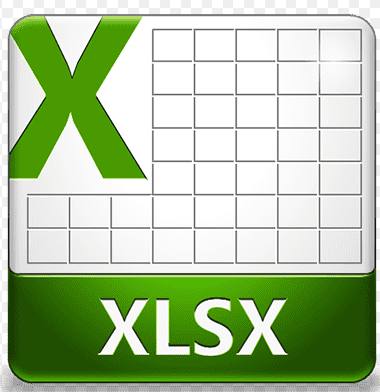Excel 2007 Microsoft launched a series of file formats to substitute the .xls. Almost every new format carries different uses and functionality. You will need to become familiar with the different formats, especially if you frequently work with Excel large files.
You also have known that Excel 2007 has totally changed its menu structure and interface. It is one of the most significant transformations in any previous version. Nevertheless, it will lead you to some headache when you are upgrading from previous version. It is because the menu structure and ribbon have totally changed. In which you think a command might possibly be moved somewhere else. You will find new file formats. It is certainly not .xls any more, you will find the new .xlsx, .xlsm, .xlsb, and also .xlam file types.
Let’s get familiar with the several types of file formats that Excel uses and understand how to switch files from one extension to another.
Note: The valuable information in this article is applicable to Excel 2019, Excel 2016, Excel 2013, Excel 2010, Excel 2007, Excel for Mac, and Excel online.
XLS vs XLSX
The standard default file format for an Excel file is XLSX. Before Excel 2007, the standard file format was XLS. The major difference between the two is that XLSX is an XML-based file extension and XLS is a patented Microsoft format. However, the latest versions of Excel open and save XLS files for the purpose of compatibility with previous versions of the program.
XLSX vs XLSM
The XLSX extension was very restrictive for programmers when developing third party software. The XLSM file format is a bit more capable. The overall spreadsheet is saved as a string of text-based XML files that are zipped to help you save storage space. As a zip file you do not need excel so that you can use the file.
XLSX is the major replacement for the past binary .xls extension. For improved security, this extension will never support Excel macros.
Security issues are on the rise with such new file types that guarantees that you will have no macros inside the file. The .xlsx file format is not different from .xlsm but deletes all macros in the file. When you don’t use macros, then you can organize file with .xlsx format. See whether a file contains macros prior to open it. Macros might include malicious code which can harm files and sacrifice computer security. Excel files which contain VBA and also XLM macros use the XLSM format. To learn more about XLSX and XLSM format I highly recommend https://www.am18.co.uk/excel-file-types-xlsm-vs-xlsx/
Can I use old versions?
In fact, the 2007 version comes with a compatibility mode, so you are able to view almost any version . It is easy to use the Save As to save an Excel 2007 file as an Excel 97-2003 file extension. Actually, Excel support various file formats.
If you dislike the new look of excel 2007, you can find add-ins that adjust it back to the format of excel 2003. There are a lot of advanced features in the most recent version that must be worth to use it. It will take time to operate the most recent version to get accustomed to the new layout.

